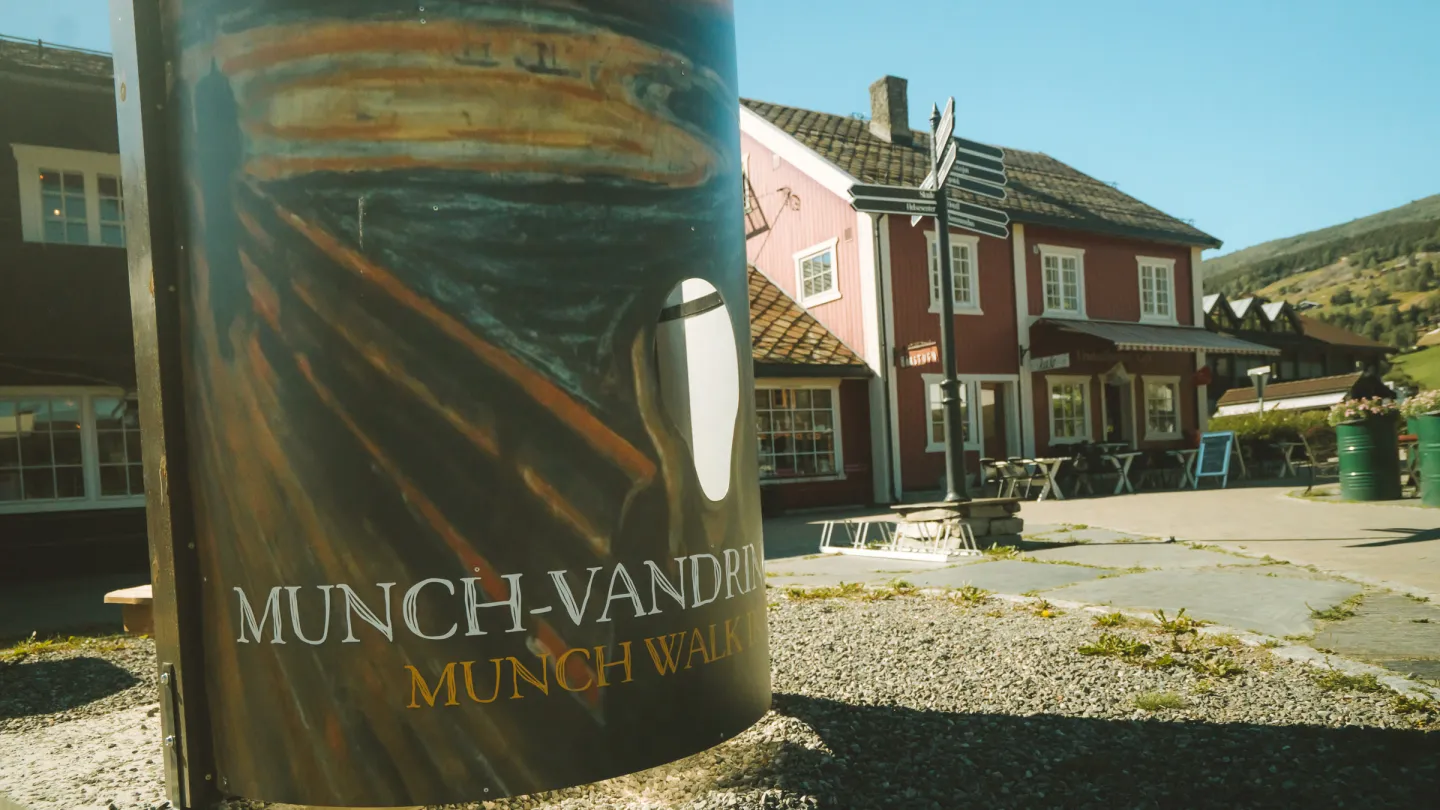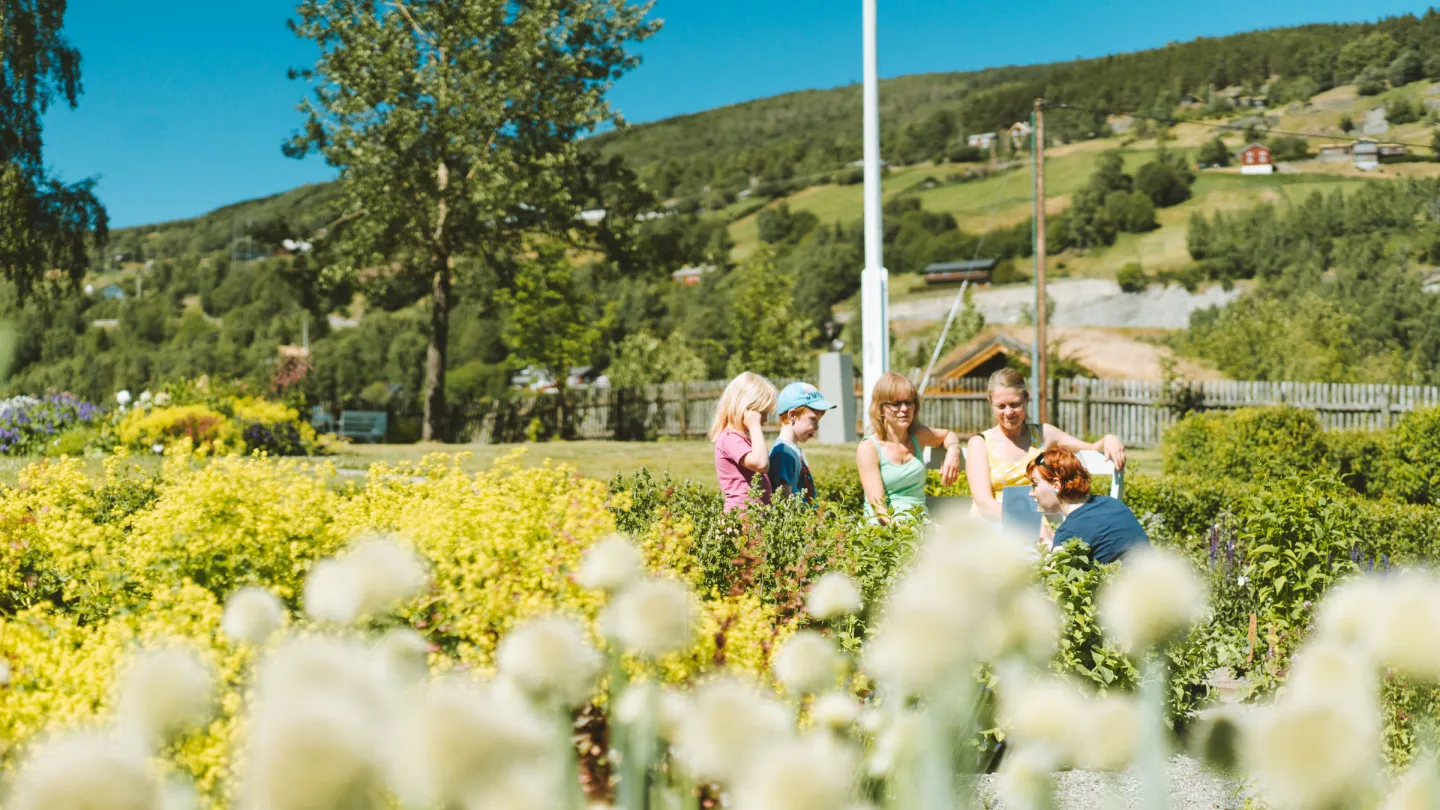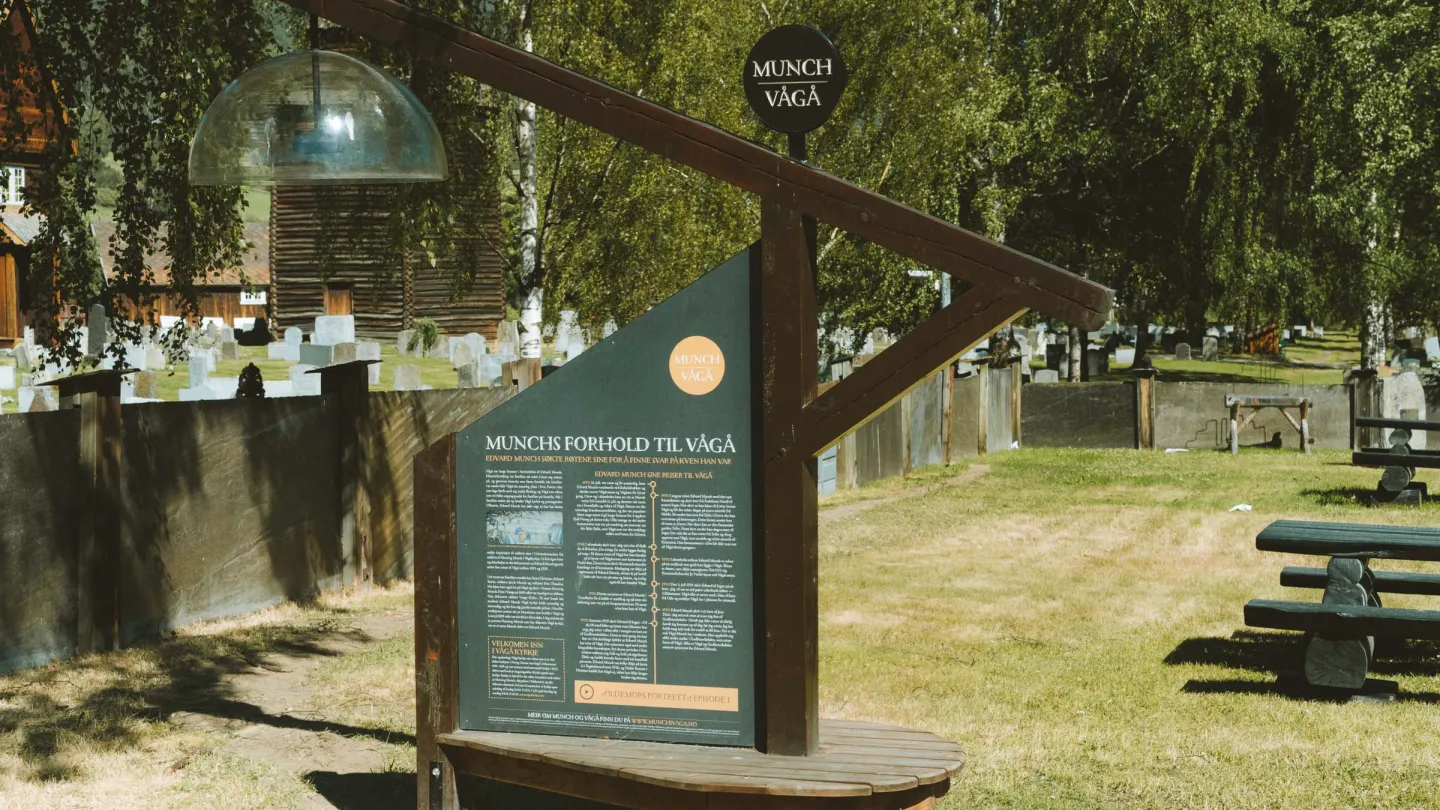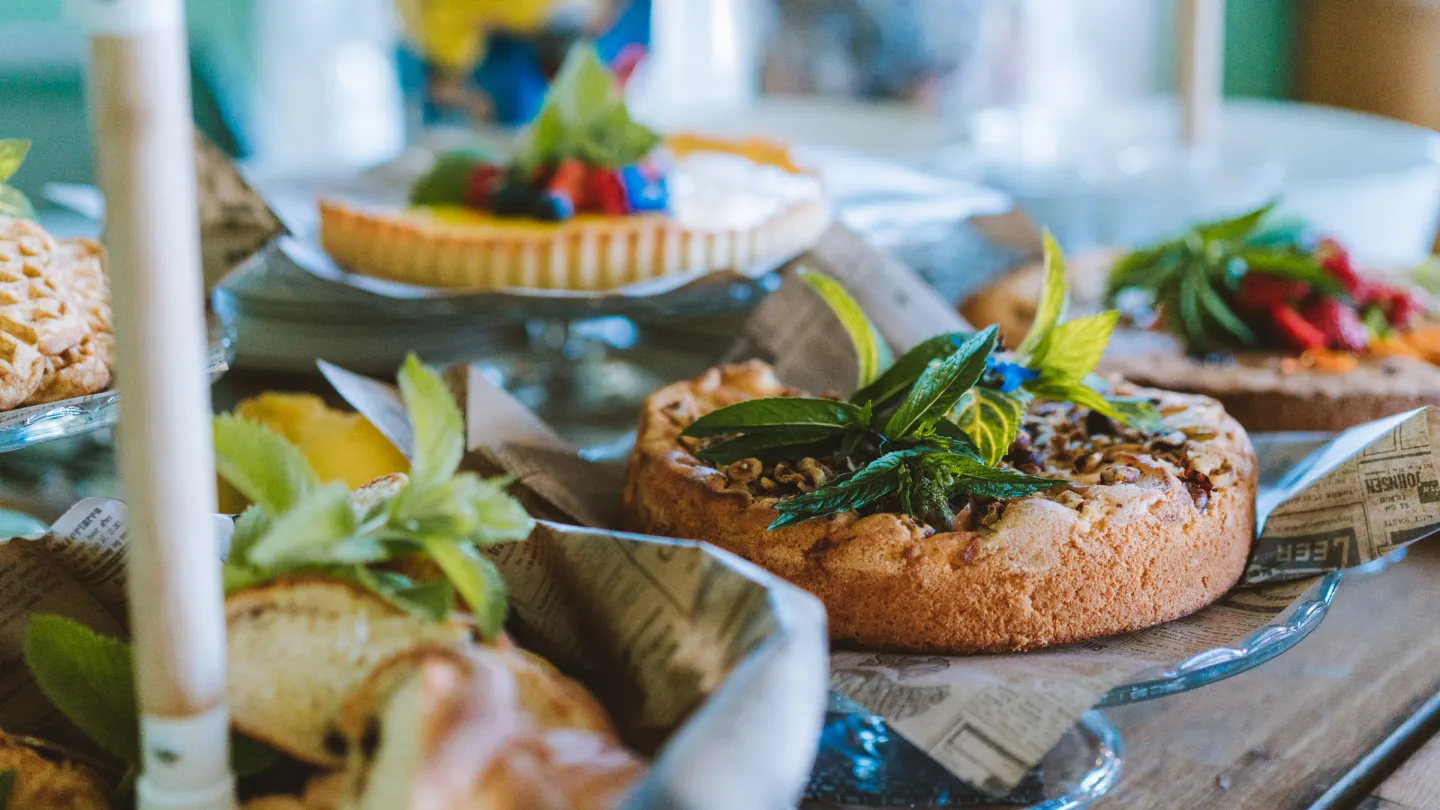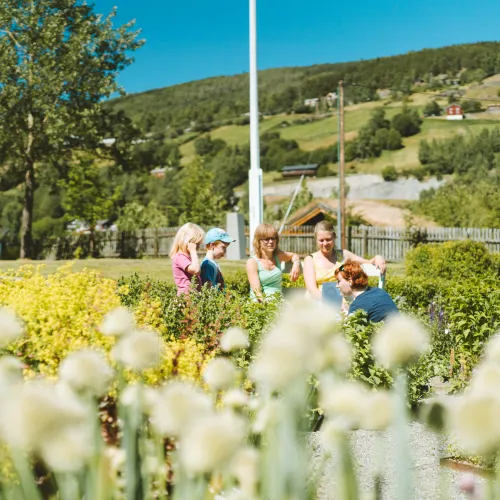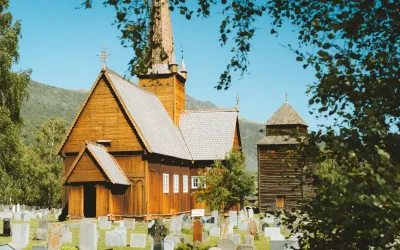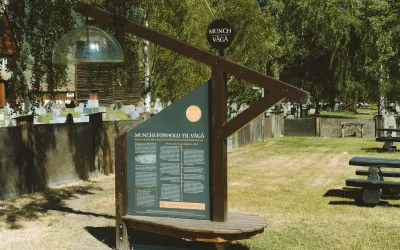Munch and Vågå
Edvard Munch is a world-renowned painter, and is perhaps Norway’s most famous artist. He was both respected and regarded as controversial by his contemporaries, and was perceived by many as self-centred, shy, and preoccupied with his own ego and art.
His letters and sketchbooks bear evidence that he visited Vågå at least on five occasions. In 1895, at age 32, he walked from Lillehammer through Gausdal, across the Fronsfjella mountains, and then through Sikkilsdalen to Vågå.
Munch has himself described Vågå church as a great source of inspiration for his wall paintings in the Oslo University Aula.
Munch walk in Vågå
As you follow in Munch’s footsteps through Vågå, you will discover different sides to the artist. Munch took an interest in how the genes we inherit shape who we are.
He felt a strong connection with Vågå, and visited on several occasions throughout his life.






